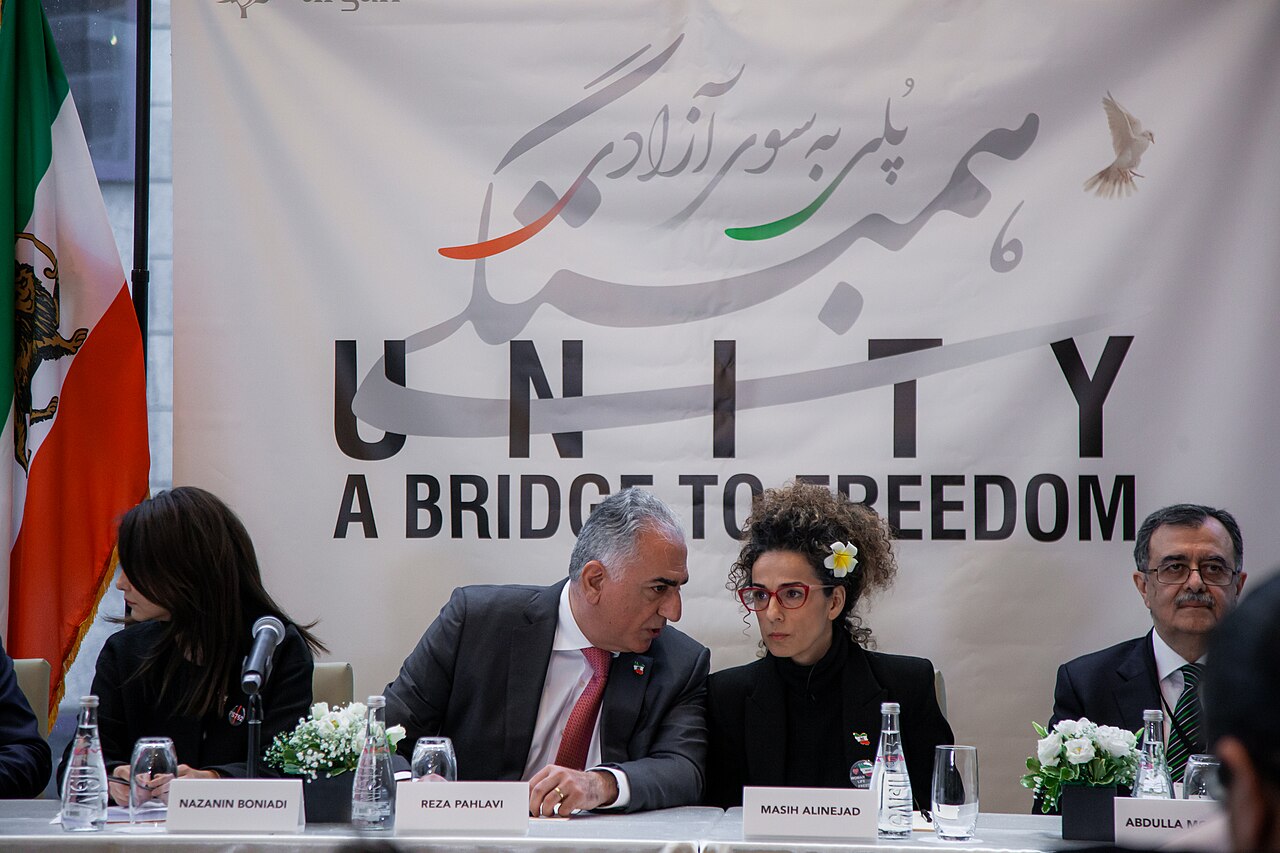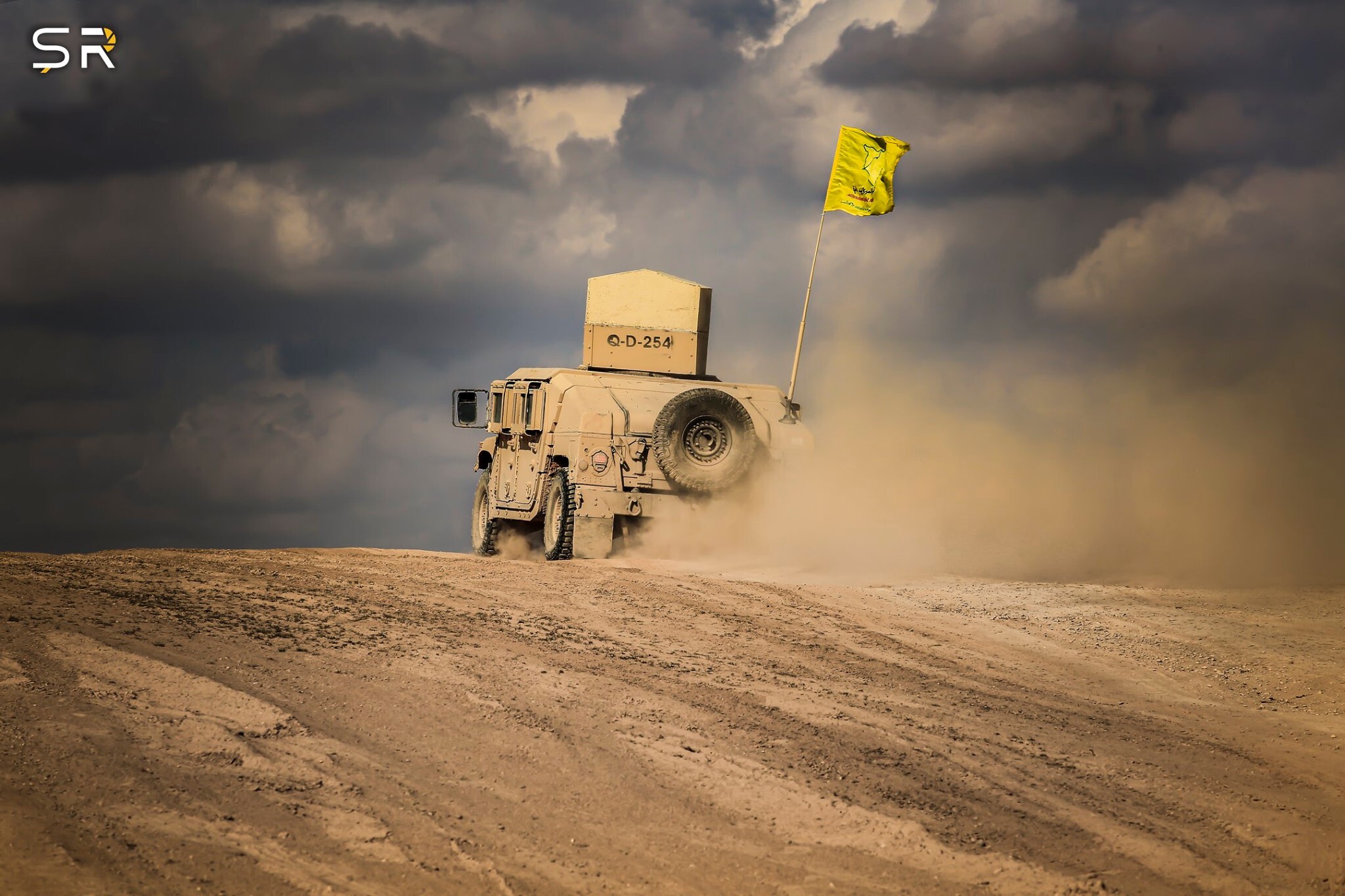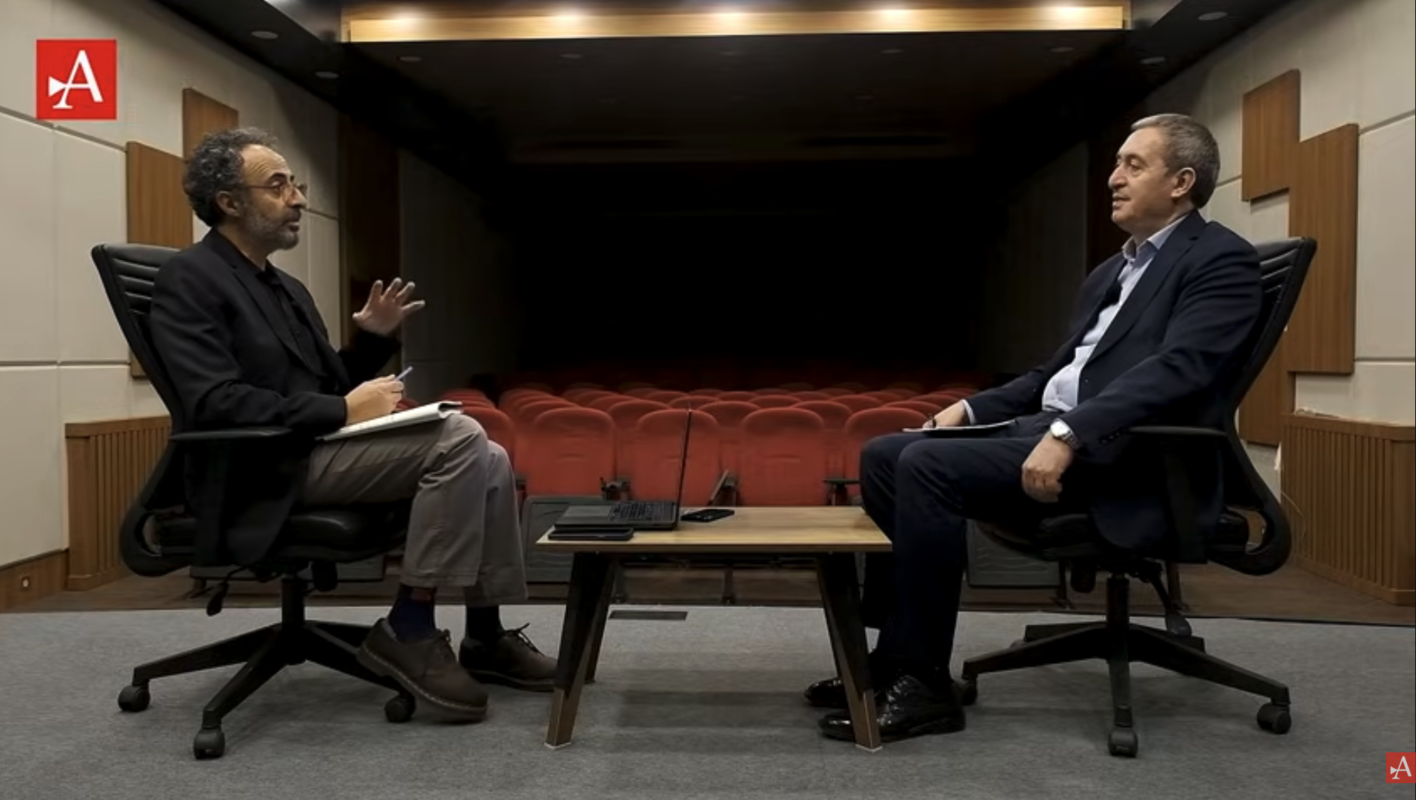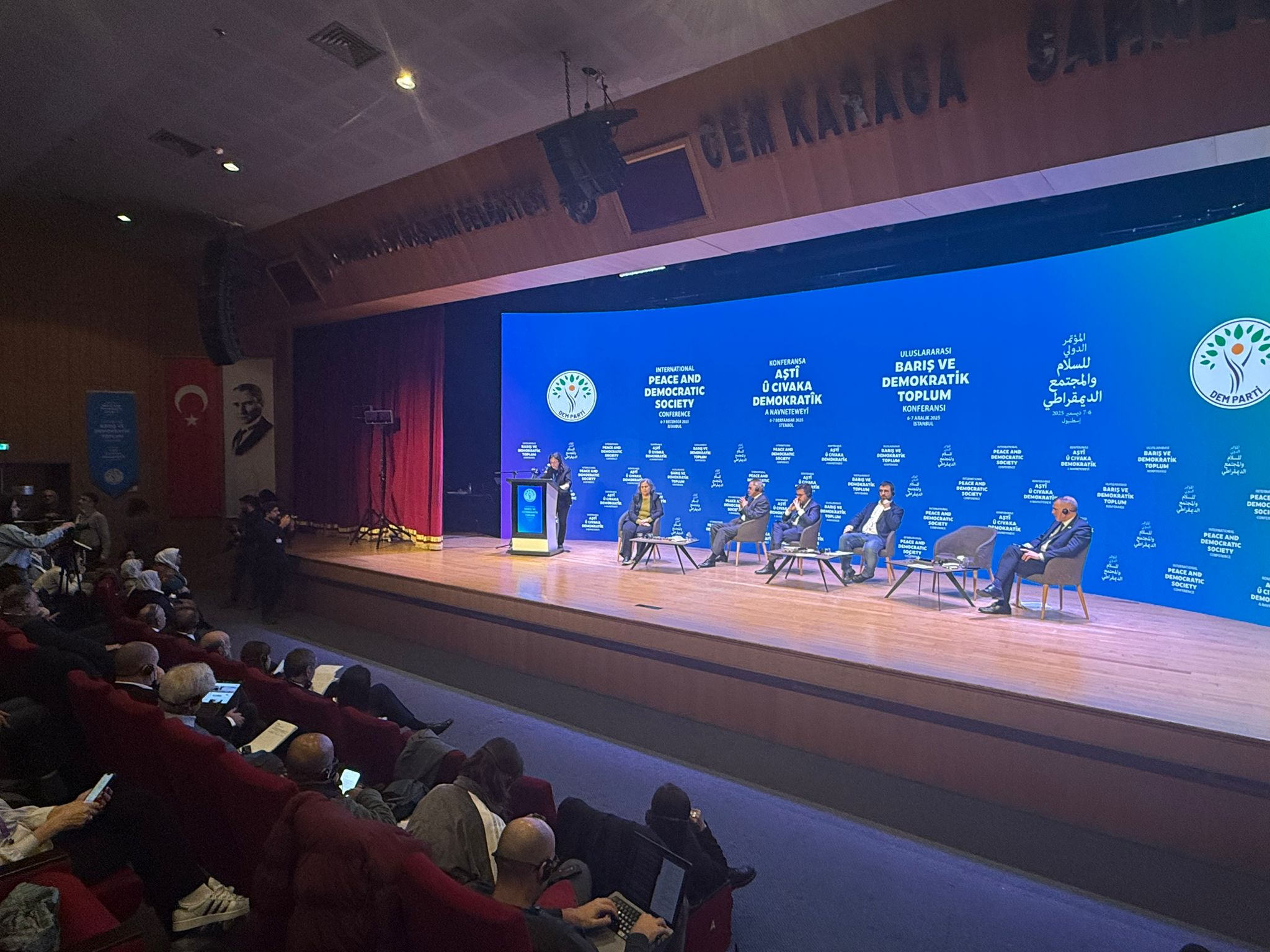Why Does the Iranian Opposition Fail to Unite Against the Islamic Republic?
Photo credit: Wikimedia Commons / Alliance for Democracy and Freedom in Iran (CC BY-SA 4.0)
This article is co-authored by Kawe Fatehi and Omid Barin
Over the past decades, the Islamic Republic of Iran has faced several political legitimacy crises. Yet, despite widespread political and social discontent since the 1979 revolution, Iran’s various opposition groups remain divided and unable to unify.
The most recent initiative to unite the diverse opposition forces was the “Mahsa Charter” in 2023. The charter was signed by Abdullah Mohtadi, leader of the Kurdistan Komala Party of Iran, Reza Pahlavi, son of the last Shah of Iran, and several other opposition figures. Although the signatories claimed that their charter was “A Roadmap for Unity and Democratic Transition After the Islamic Republic”, their efforts failed and their coalition collapsed.
Ideological differences, leadership rivalries, and pressure from Iran’s rulers through strict laws, propaganda, arrests, torture, and executions were among the reasons for this division. Moreover, outside factors like selective international support and the challenges of living in exile keep the opposition divided.
The Amargi spoke to three experts—sociologists and political activists—about these issues.
Ideological Differences
The political map of the Iranian opposition contains a diverse mix of ideological and ethnic blocs, with each having its own agenda for Iran’s future.
Iran’s opposition, largely in exile, is primarily composed of various groups with different political ideas. Ideological differences among these groups complicate their unity and cooperation.
The political map of the Iranian opposition contains a diverse mix of ideological and ethnic blocs, with each having its own agenda for Iran’s future. On the one hand, monarchists and constitutionalists, centered on the figure of Reza Pahlavi, see a return to a constitutional monarchy as the solution. On the other hand, secular republicans—from the People’s Mojahedin Organization of Iran (MEK) to liberal democratic groups—emphasize a republic grounded in human rights and secularism. Leftist and socialist forces, such as the Organization of Iranian People’s Feda’i Guerrillas or the Left Party of Iran (Tudeh), have placed social justice at the center of their discourse. At the same time, ethnic parties among Kurds, Baluchis, and Arabs want to change the manner in which power is divided between the center and the periphery in Iran; they seek federalism, cultural equality, and an end to discrimination based on ethnic or religious differences.
Fatemeh Karimi, sociologist and researcher on women’s issues, who holds a PhD in Sociology from the Higher School of Social Sciences (EHESS) in France, told The Amargi that while diversity within the opposition is natural, the main issue is the persisting inability to reach an agreement based on a “common minimum”.
She argues that the roots of this lie in Iran’s contemporary history, where the suppression of political forces during the Pahlavi era and following the 1979 revolution turned “diversity into a threat.” For example, Iranian centralist-nationalist parties and the current ruling authority in Iran view ethnic demands as “separatism”; such convictions make unity impossible.
Karimi says: “The main problem is not simply that the Iranian opposition has different ideologies; rather, the issue is the persistence of an exclusionary mindset and the urge to eliminate the other. It leads to the same cycle of history, resulting in damaging quarrels, rather than collaboration.’’
She emphasizes that these ideological differences lead not to constructive competition, but to attempts to “eliminate and absolutely delegitimize opponents”; for example, nationalist and monarchist forces consider left-wing movements “unpatriotic”, while left-wing parties consider monarchists as symbolizing a “return to tyranny”.
Mehrdad Darvishpour, sociologist and professor at Mälardalen University in Sweden, whose research focuses on social and political structures, particularly in the Middle East, similarly believes that such ideological and political conflicts are the main reason why no united front has emerged. He also points out that the self-proclaimed leaders of most groups and “the strong sectarian and individualistic culture” within the parties do not allow for any collective consensus.
Habibollah Baloch, a political activist struggling for the Baluch people’s rights, looks at the issue differently. In his view, while it is important to recognize the political diversity within the opposition, it is just as necessary to recognize the diversity of nationalities in Iran.
…various opposition groups who struggle desperately against each other, instead of struggling against the Islamic Republic
He mentions that the main obstacle to unity is the phenomenon of “opposition against opposition”, implying that the various opposition groups who struggle desperately against each other, instead of struggling against the Islamic Republic. Baloch believes that: “this conflict is fueled by the regime.” Baloch rejects the notion of absolute unity; in his view, the differences within these oppositions are so deep that it is possible to “bring the opposites together.”
External factors
Alongside internal rivalries among the different forces, external factors also play a major role in shaping opposition politics. According to Karimi: “Regime pressures have played a decisive role in creating divisions, and the regime undermines trust through influence and threats.”
The opposition in exile also faces threats, assassinations, and pressure. According to human rights organizations, the regime has assassinated dozens of opponents abroad since 1979. These include Shapour Bakhtiar, the last prime minister of the Pahlavi rule, in France (1991), and Abdolrahman Ghasemlou, the late secretary of the Kurdistan Democratic Party of Iran (KDPI) in Austria (1989). In 2018, Iran launched targeted missiles on Iraqi territory, killing more than a dozen peshmerga fighters, including leading figures of the KDPI.
Darvishpour states: “The Islamic Republic is making it harder for the opposition in exile to get unified through security influence, psychological warfare, infiltration by agents, character assassination, and by sowing division.”
He also refers to foreign interference, saying, “efforts by some foreign powers to back puppet figures in Iran increase distrust. At the same time, the state also fears some opposition groups coming closer together.”
For example, he notes, recent reports indicate that an Israeli infiltration operation was launched, using fake accounts and artificial AI-generated content to promote Reza Pahlavi and push for the return of the monarchy in Iran.
The regime’s exploitation of opposition divisions
News sources reported that the Islamic Republic of Iran systematically exploits internal divisions among opposition groups to its own advantage. This approach, known as the policy of “divide and rule,” implies an attempt to deepen existing ideological, ethnic, and strategic rifts.
“The government, using its security and intelligence networks, has attempted to weaken the unity of the opposition by infiltrating, threatening, and discrediting opposition figures,” explains Fatemeh Karimi.
In recent years, this policy has intensified with the rise of regional tensions, like the conflicts between Iran and Israel. Some groups, like the monarchists, have backed Israeli attacks. Their leader, Reza Pahlavi, the exiled son of the former Shah, refused to condemn the attacks, instead calling them an “opportunity” for Iranians to rise against the Islamic Republic of Iran.
Karimi considers this declaration to be “open support for foreign attacks,” and says: “Such actions have not gone unnoticed by other political groups and practically minimize any kind of cooperation, even minimal, between them.”
Yet other groups, like republicans and leftists, regard these assaults as a serious threat to Iran’s independence and territorial integrity. They oppose Israel’s assaults because, in their view, the support of any foreign intervention may lead to the “disintegration” or “dependency” of the nation.
Center-periphery contradictions
Even the basic demands of these groups, such as the right to education in their mother language, or the proposal of ideas such as federalism, are still met with labels like ‘separatism’
In a multi-ethnic country like Iran, it is crucial for different ethnic groups to coexist with each other equally. In Karimi’s words: “The lack of adequate rights of minorities is also one of the deepest and most vital political and social gaps in Iran today. Even the basic demands of these groups, such as the right to education in their mother language, or the proposal of ideas such as federalism, are still met with labels like ‘separatism’ by both a significant part of the nationalist political opposition forces and the current ruling authority in Iran.”
Minorities account for half of the population in Iran but suffer economic and cultural discrimination. “Without guaranteeing the rights of minorities, no long-standing unity can be built,” Karimi believes.
She further warns that “no lasting unity will be formed” without a commitment to inclusivity and the rights of minorities and ethnic groups.
The recent “Women, Life, Freedom” movement revealed that ordinary people inside Iran can unite around common democratic values like justice, secularism, and equality. It remains to be seen whether the opposition in exile can draw any lessons from the people struggling inside the country and within everyday life. Iran’s ruling authority, meanwhile, benefits from an opposition that fails to reform itself.
Kawe Fatehi
Kawe Fatehi is a journalist and translator, based in Berlin, with a Master's degree in English Literature and Language. He has written for multiple Kurdish and Persian media outlets, covering topics related to the Kurdish community in Iran, Iraq, Turkey, and Syria. In addition to his journalism work, he is a social worker.




